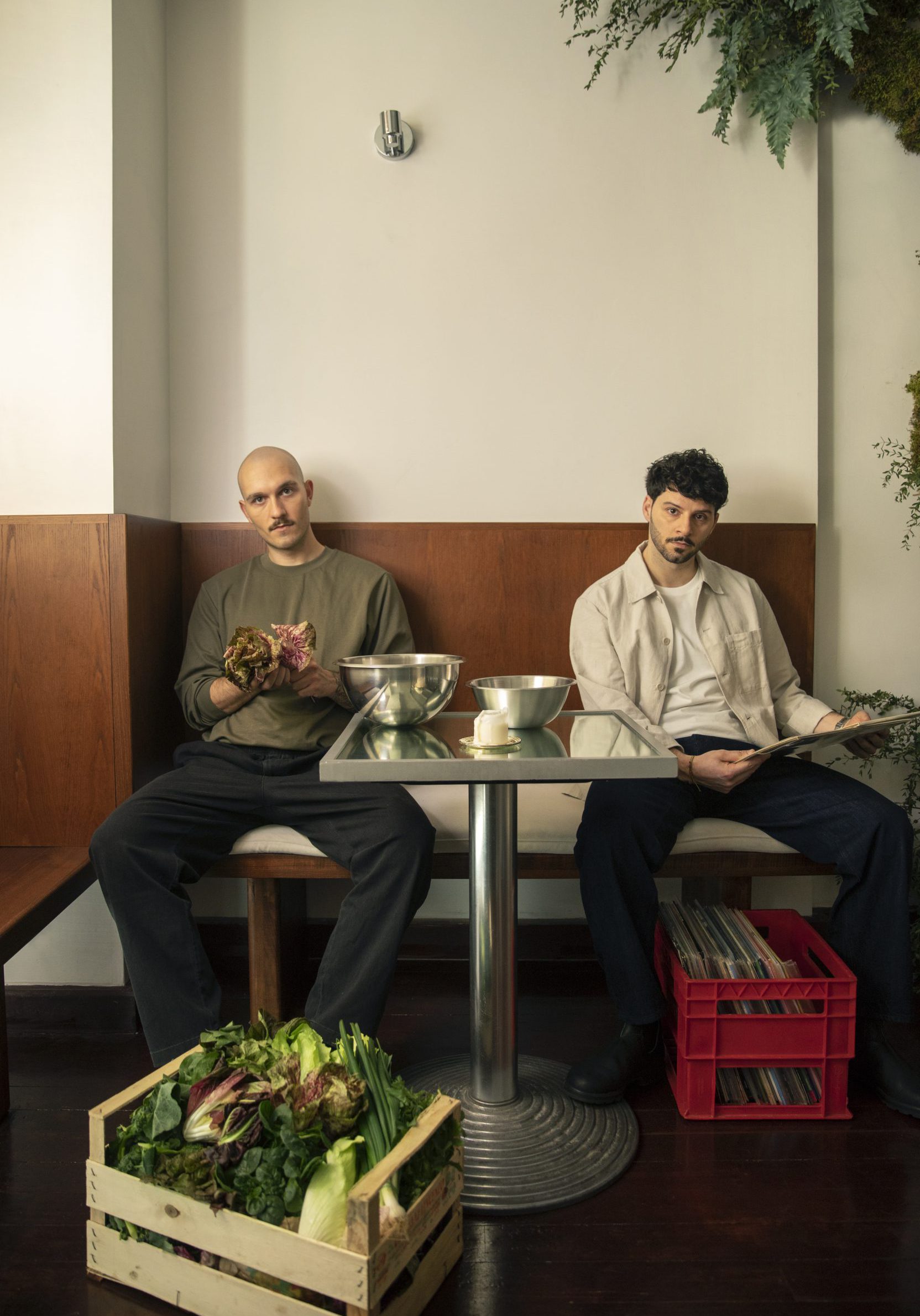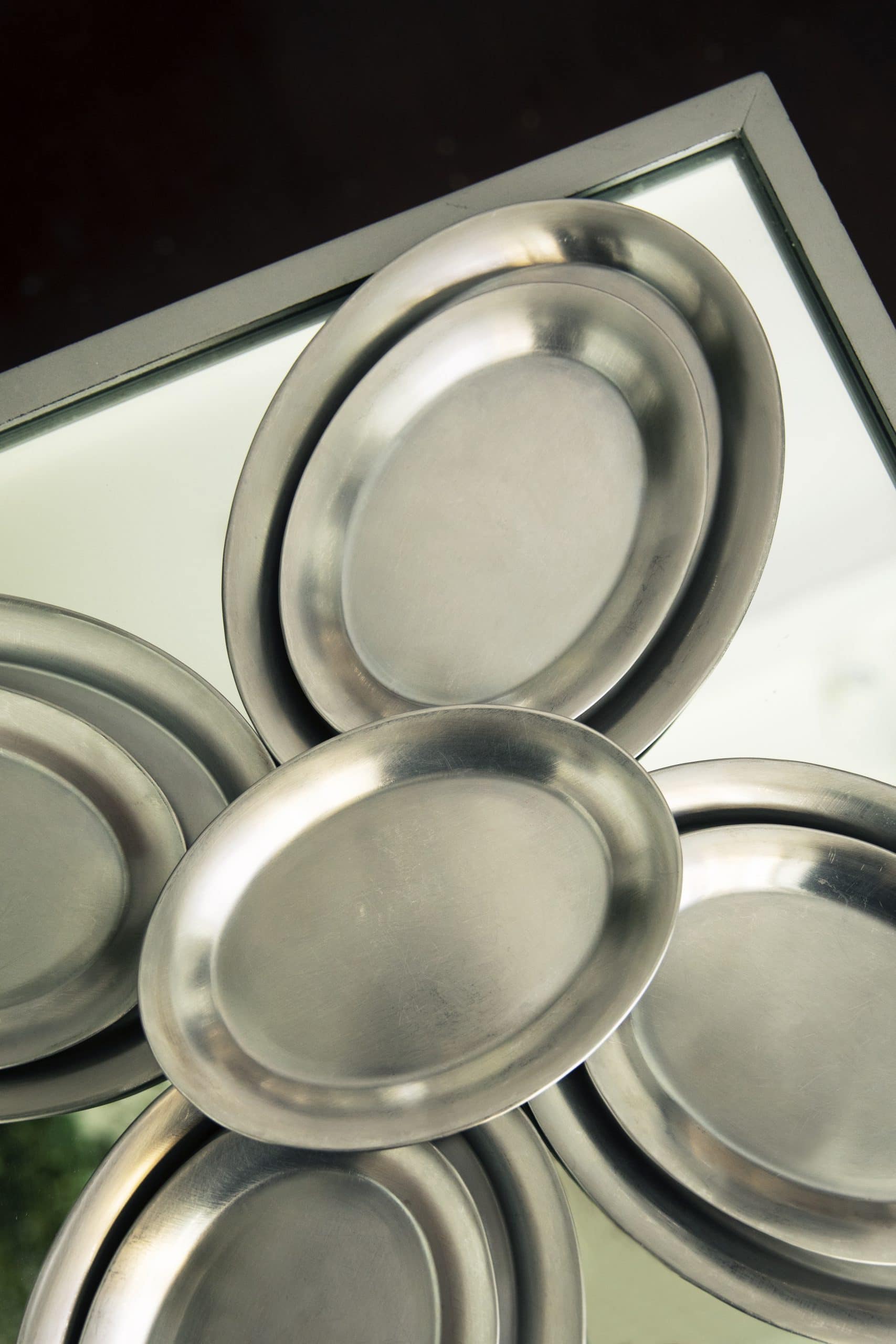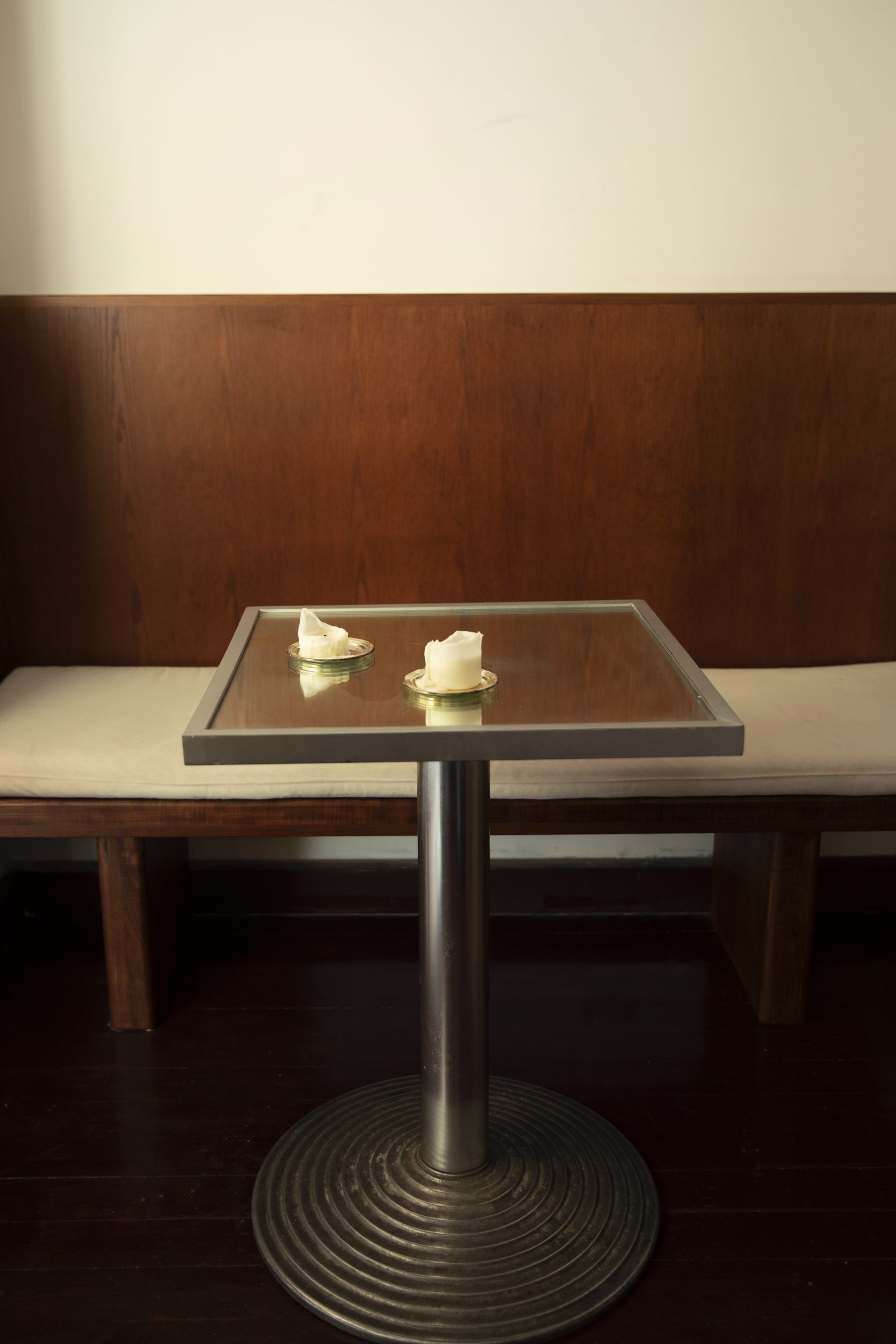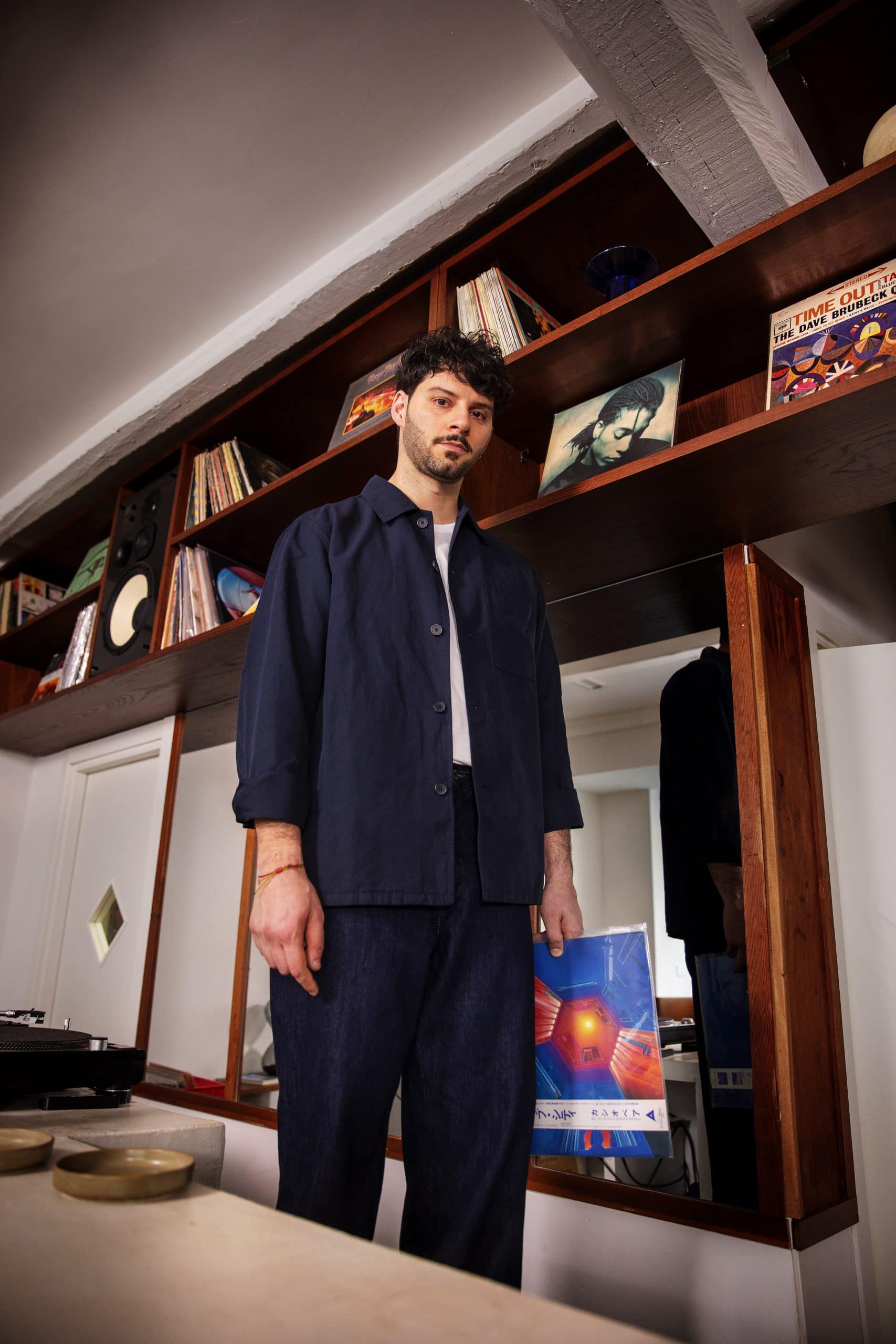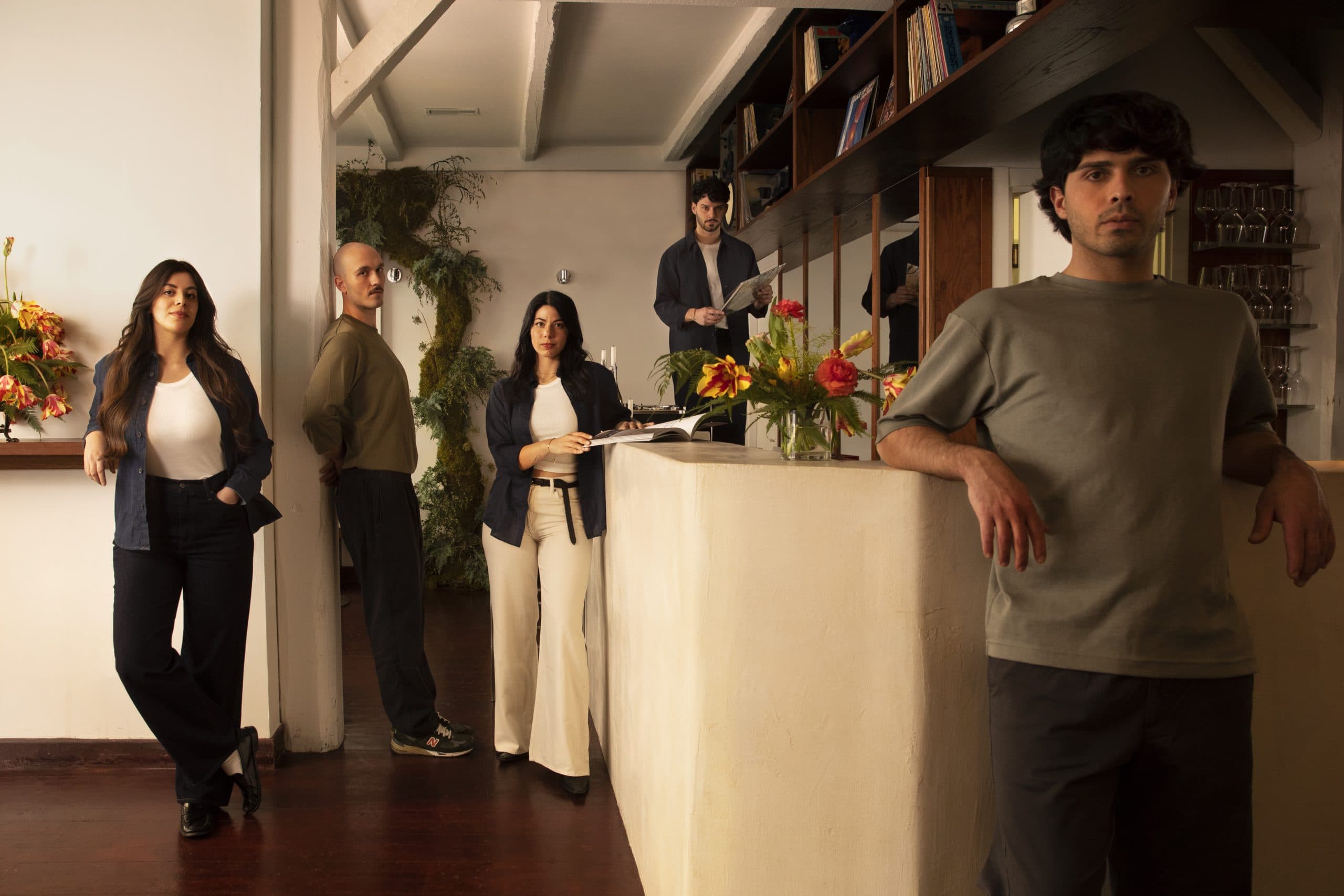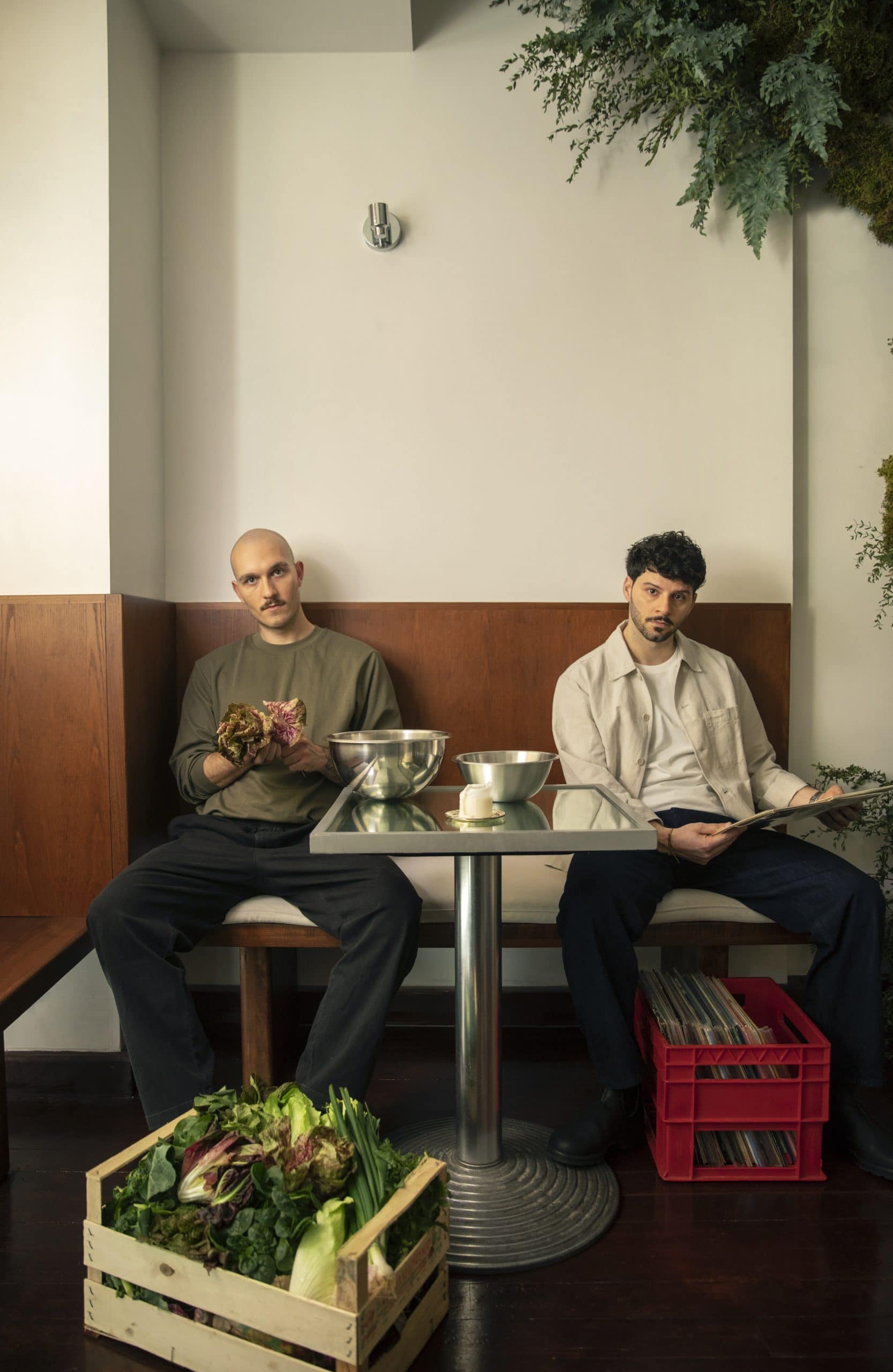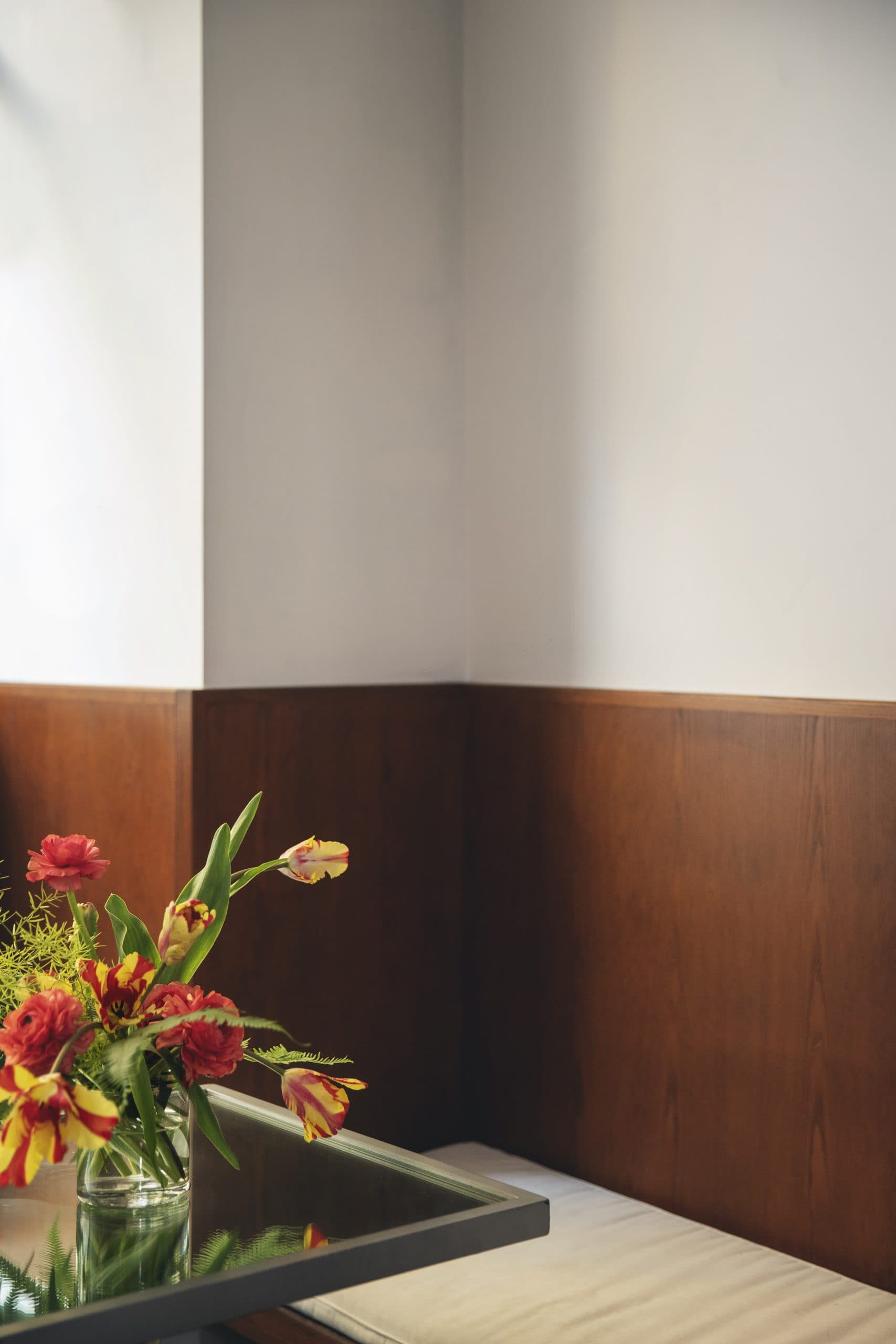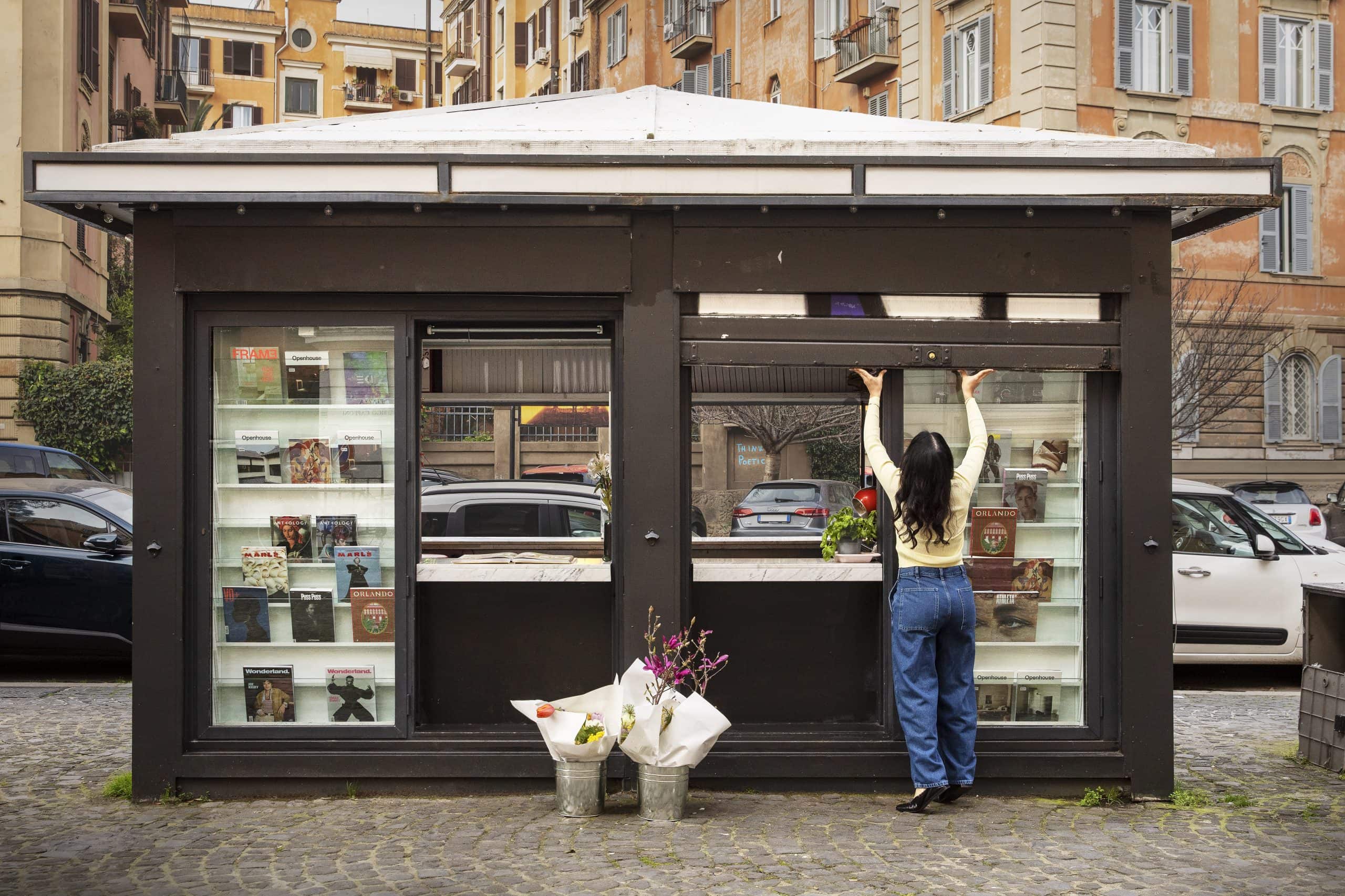EST. ROMA – MORNING
The morning light slowly slides over the rooftops of Rome. The city is wrapped in a quiet that seems suspended, almost out of time.The newsstand opens its shutters with a metallic sound, the rustle of newspapers being unrolled is the first sound that breaks the silence. An anonymous figure moves with slow and methodical gestures, arranging the magazines. Every movement is precise, without haste. The rhythm of the city is still on stand-by.
CUT TO:
INT. LOCALE – EARLY MORNING
An empty place. The light filters through the windows, soft and warm. The silence is deep, different from that of the night, like an emptiness that prepares the heart for the day. A record is placed on the turntable: the needle slides, and the first notes of minimal jazz begin to fill the air. The scent of coffee begins to spread. It is the first listen, the first vinyl spin that animates the empty space.
CUT TO:
EST. EDICOLA – AFTERNOON
A figure stops in front of the newsstand. He leafs through the magazines calmly, as if time were not an enemy. Every now and then he stops on one magazine, then another, without haste. He exchanges a few words with the newsagent about a special issue he is looking for. Afterwards, he stays for a few minutes to watch the people pass by. Boredom here is not a burden, but a pause that breathes, a suspended moment.
CUT TO:
INT. LOCALE – LATE AFTERNOON
The place is now ready for the evening. The first customers enter, take a seat at the counter. The musical selection for the evening is ready. The volume of the music slowly increases, intertwining with the low voices of conversations that begin to fill the room. The boredom of the afternoon has given way to the music. The transition between the two moments is fluid, without jolts, like the B-side that follows the A-side of a vinyl record.
CUT TO:
EST. ROMA – EVENING
The sun begins to set. The city changes pace, traffic becomes heavier. The newsstand closes its doors, the newspapers are put away, the sound of the shutter closing signals the end of another day. The place, now alive, continues to pulsate with the music that fills the air.
CUT TO:
INT. LOCALE – NIGHT
The music gets louder and louder, the dim lights cast soft shadows on the walls. The city slowly begins to die down.
The customers end their evening. Time seems to dilate, but the night is destined to end. The city clock continues to beat its rhythm.
CUT TO:
EST. EDICOLA – MORNING
The morning light filters back onto the newsstand. The city wakes up again, ready to repeat itself, but always different. A new record will be chosen, new pages will be turned. Time continues to flow, unchanging, but always changed.
FADE OUT.
EDICOLA ERNO
1. Once upon a time, newsstands were the internet of cities. What can a newsstand offer today to a generation raised on infinite scrolling?
In this modern age, where digital content is increasingly pervasive in our lives, a contemporary newsstand can be seen as a space for sharing real projects and visions. EDICOLA ERNO, in particular, has organically built an extensive network of creatives from various fields. The events we organize create engaging exchanges, often leading to new friendships and professional collaborations.
2. EDICOLA ERNO is described as a “non-ordinary newsstand”: what does this definition concretely mean? How do you redefine this traditional concept?
Our acronym stands for “Edicola Romana Non Ordinaria” (Non-Ordinary Roman Newsstand). Since its inception, my partner Valentina Chiani and I envisioned this space as a home for independent magazines in the fields of art, fashion, photography, and design. Over time, we have continuously expanded our selection without ever including traditional mainstream publications. Additionally, we wanted to create a space dedicated to artistic exhibitions and events. No one before us had imagined a newsstand in this way, which is why we proudly define ourselves as “non-ordinary.”
3. What is the strangest, rarest, or most unexpected publication that has passed through your hands?
I often come across editorials that tackle controversial or provocative topics through text and photography. What captivates me most about a magazine is often its binding, paperweight, and format—I have a particular fetish for well-crafted, tactile magazines. Recently, I found *A Magazine Curated By*’s collaboration with Futura Proxima for Gucci particularly interesting. It breaks away from traditional binding and layout, transforming into a calendar with an exceptional graphic and photographic concept.
4. Rome is full of abandoned newsstands: is yours an act of resistance or reinvention?
Many of Rome’s disused newsstands are being demolished instead of repurposed—an easy but truly disheartening solution. Our presence in the square is a statement. I believe our project is both an act of resistance and reinvention. We will continue on our path, refusing to conform to outdated perspectives.
5. Was there a precise moment when you realized that your newsstand was more than just a kiosk, but something much bigger?
For the past three years, we have received an overwhelming number of collaboration proposals, and I still find it hard to believe. I am incredibly proud of my team and the journey we are on. I don’t think I have fully grasped the extent of our success yet, but that’s okay—we are a cherished Roman reality, and our goal is to keep our community active and engaged.
6. What kind of events or initiatives do you organize to engage the community?
Every month, we curate a diverse lineup of events. Our audience loves attending magazine presentations and pop-ups. We promote both Italian and international artisanal brands, organize aperitifs and DJ sets, and frequently host the launches of new independent publications. During these events, the newsstand is “branded,” which is something our visitors really appreciate.
7. What criteria do you use to select the publications and content you offer?
Our selection process is guided by our concept and the audience we attract: people passionate about fashion and design who are keen on emerging and avant-garde realities.
8. A newsstand as a cultural space has a strong local component: what is your relationship with the city of Rome?
We are deeply connected to Rome, heart to heart, from day one. I believe we have created a necessary space—architecturally conservative yet conceptually revolutionary and transversal. Many people tell us that EDICOLA ERNO has “an international aura.”
9. What has been the public’s response, and how has it evolved over time?
The public response remains very positive. We keep the activity dynamic, constantly adapting it to new proposals and collaborations. Over time, we have responded to different requests in alignment with our audience’s evolving expectations.
10. Do you collaborate with publishers, artists, or other cultural spaces? If so, which have been the most significant?
We have collaborated with major publishers such as Assouline and Gestalten. One of our most significant collaborations was with Valentino for the launch of *V Logo Signature*, a limited-edition book that involved the art direction of 16 independent magazines, both Italian and international.
11. In an increasingly digital age, what value does print publishing hold for you?
Print is a significant and sensory experience—a delicate, sincere touch for those who belong to this world. I collect antique objects and magazines, and owning something tangible simply makes me happier. A magazine can be an interior design element, a collectible, or a study object, and I love this versatility. While I do not entirely dismiss digital media, I believe there is no real comparison.
12. What kind of events or initiatives do you organize to engage the community?
We mainly organize pop-ups and magazine launches.
13. What is your vision for the future of EDICOLA ERNO? Is there an evolution you envision for the project?
We aim to expand into other cities. Exciting news is on the way.
33 GIRI
1. If 33 GIRI were a vinyl record, what would its title be, and which track would best represent it?
David Bowie’s *Hunky Dory* is a journey through rock, pop, and art, intertwining sounds and visions that capture the essence of profound change. The song *Changes* is the beating heart of this transformation—an anthem to creative rebirth, a sign of one era ending to make room for new possibilities. The opening of 33 GIRI was not just the conclusion of a period of reflection and choices for Carlo, but a new beginning, where music becomes the common thread of a soul rediscovering and reinventing itself.
2. How do you manage to balance the dining and musical experience so that neither overshadows the other?
Balancing gastronomy and music is an art that requires harmony. Our goal is to create an atmosphere where they complement each other without one overpowering the other. For us, music should enhance the dining experience rather than distract from it.
3. What is the perfect soundtrack for a dinner at 33 GIRI? Do you follow a golden rule for music selection?
We don’t have a golden rule because, like food, music is a deeply personal experience. The key is to craft an ambiance that allows people to savor both elements fully. Music should be an understated companion, enriching the experience without overwhelming it. Depending on the mood, the perfect sound could range from jazz to soft electronic music, soul, or acoustic tunes. Every dish and every moment of the evening can be paired with a type of music that expresses its delicacy or strength, always with the right volume and a selection that stimulates without distracting.
4. Rome is chaotic, layered, and full of contrasts. How much of this energy is reflected in your philosophy?
We’ve always envisioned 33 GIRI as a place embodying Rome’s warmth and timeless spirit while opening windows to distant worlds. It’s a space where food and music are not just elements of conviviality but bridges between cultures, tools for travel through unexpected flavors and immersive sounds.
5. What dish best represents your identity, and which track would accompany it?
Shrimp and radicchio, paired with *Paradise* by Sade—a sensual and smooth yet enveloping and confident track, much like the flavors of this dish.
6. The future of nightlife and independent dining is evolving. Where do you see 33 GIRI in five years?
We see 33 GIRI not just as a place but as an idea that can travel—a thread connecting people across distances through shared emotions. We imagine different cities, kindred spirits recognizing themselves in this philosophy, in this harmony of passions. Knowing that elsewhere, at the same moment, someone resonates with our same vibe fills our hearts. We hope to bring this concept to other cities in the near future.
7. How was the idea of 33 GIRI born, and how does it merge music and dining?
33 GIRI stems from our deepest passions: cuisine, inherited from Federica’s parents through their culinary ventures, and music, which has always been Carlo’s lifeblood. Traveling, we realized that what we sought most in the places we visited were these elements—the sound of a city, the scent of distant kitchens, atmospheres that tell stories without words. We gathered and treasured emotions, savored new worlds, and intertwined experiences.
8. The name “33 GIRI” refers to vinyl records. How central is the concept of analog in your project?
Vinyl is, for us, the perfect synthesis of the senses: its cover is already a story, a visual prelude to what’s to come. Touching it is an act of care, choosing a track is an attentive gesture. Then there’s its scent, that unique aroma that holds time, the hands that have touched it, the life it has seen—especially when searching for vintage pieces. And finally, its warm, vibrant sound that brings music back to its purest form, to the magic of anticipation. Vinyl is an essential companion to dining; we love it when guests at 33 GIRI approach the console during dinner, point at a record, and ask to hear it. So yes, vinyl is at the heart of what we do.
9. What kind of atmosphere do you aim to create for those who walk through your doors?
We want our guests to feel at home yet in exploration—immersed in a world of contrasts and harmonies.
10. How do you curate the music selection, and what role does it play in shaping the overall experience?
Carlo curates the selection, constantly searching between old and new tracks. The dialogue with the kitchen is essential: before introducing a new menu or even a small change, Carlo and our chefs sit down to imagine the atmosphere they want to evoke. Every note has its own flavor.
11. What has been the most significant event you have hosted so far?
For us, every night is a significant event. Every day, our small community grows, and new connections are made—this is the heartbeat of our place.
12. How does the public interact with your concept? Have there been any reactions that surprised you?
From the very beginning, we’ve been thrilled by the spontaneous interaction with our audience. A lively and authentic exchange has emerged. Many of our patrons feel the urge to contribute, to bring their music, to share their sonic universe. That’s why those who play records here are often people we’ve met at 33 GIRI itself. It’s not just ours—it belongs to everyone who experiences it. It’s an open stage.
13. Rome has a diverse music and food scene. How do you position yourselves within this landscape?
Rome is a rich stage that blends tradition and innovation. What we do is find the right balance between roots and continuous discovery, evolution.
